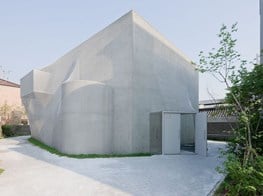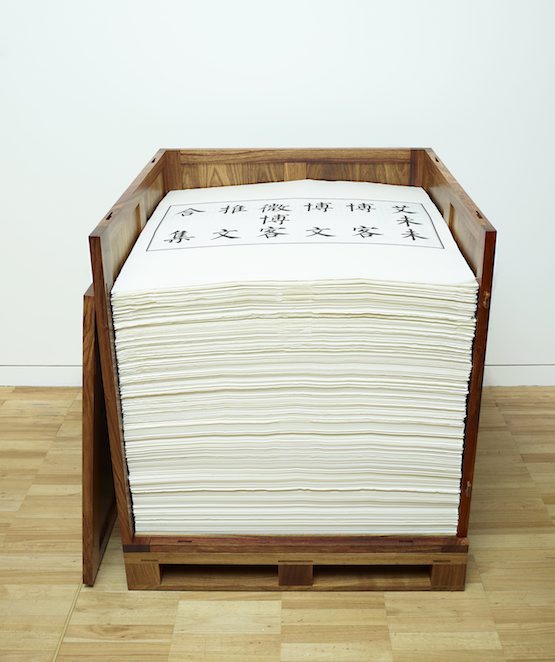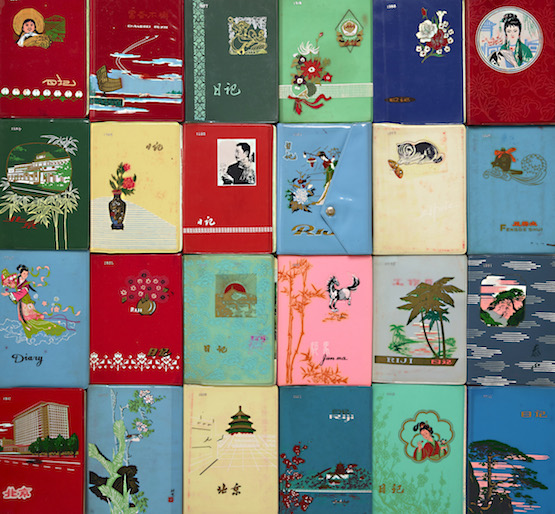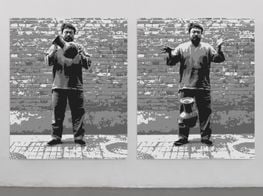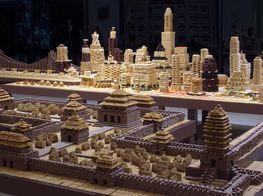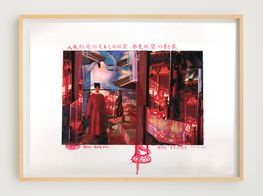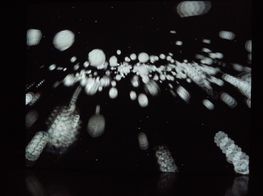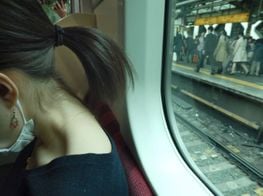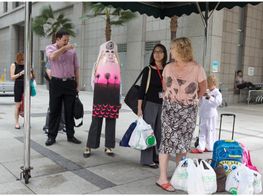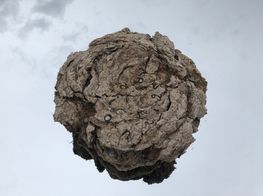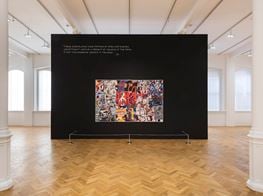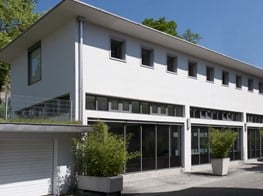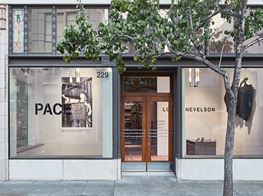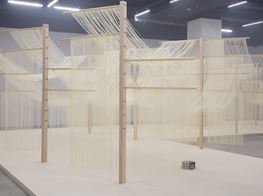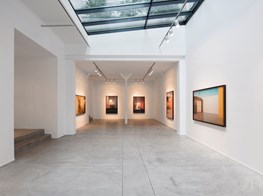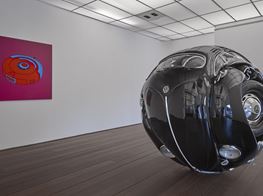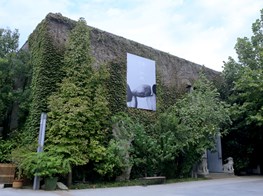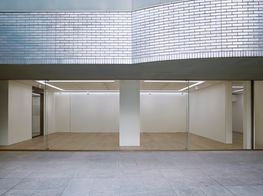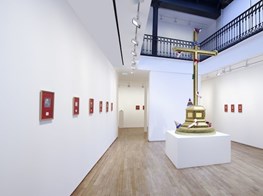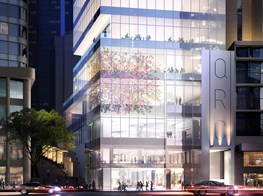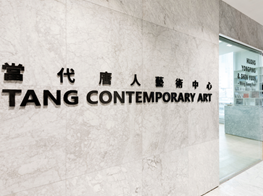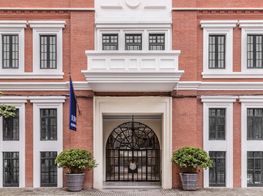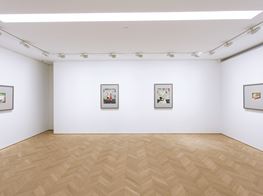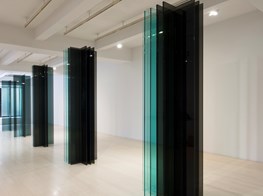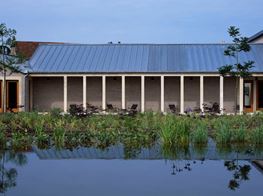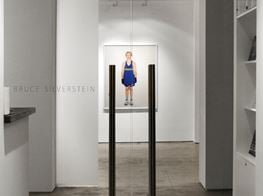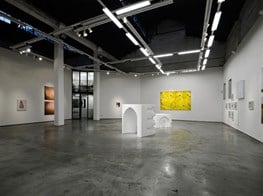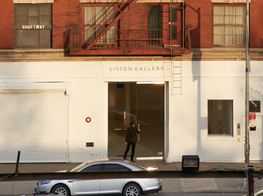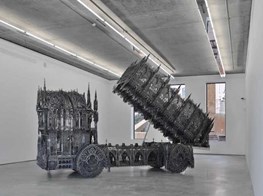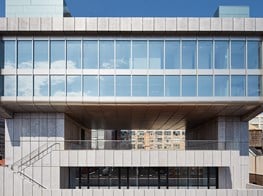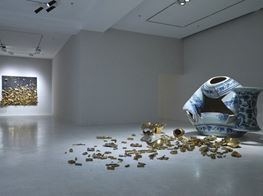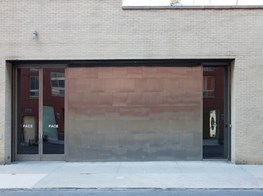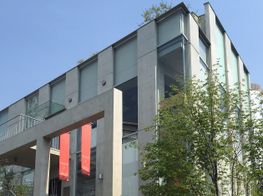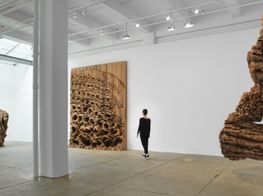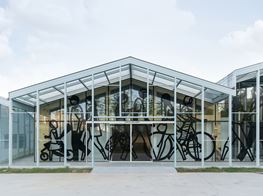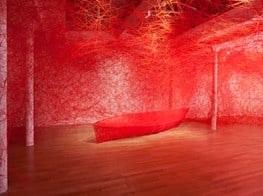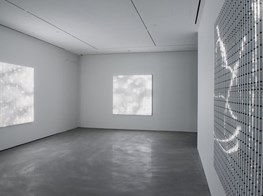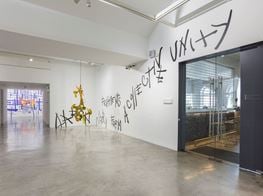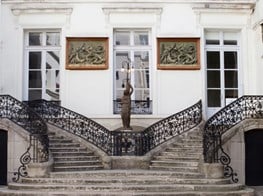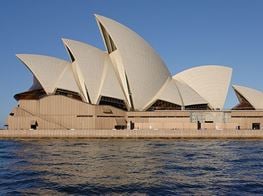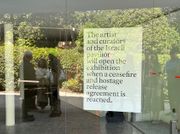Gene Sherman & Suhanya Raffel

When Australian collectors and philanthropists Gene and Brian Sherman moved from South Africa to Australia in 1976, Gene says they instantly recognised a “buzz about Asia” that they weren’t expecting.
As an academic teaching French literature, the push towards Asian languages also put her out of a job. “I went into the gallery world and I decided if you can’t beat them, join them. I’d better learn a bit about Asia, about which I knew nothing,” she says.
She ran a commercial space, Sherman Galleries, until 2007 before transforming it into her current non-profit exhibition space, the Sherman Contemporary Art Foundation. As a way of expanding her reach she has partnered with a number of public institutions and Go East
is certainly among the most ambitious of these projects.
It presents contemporary Asian work from their private collection across the Art Gallery of New South Wales and their own exhibition space at SCAF. As an example of how successful public and private partnerships can be, Go East includes Jitish Kallat’s massive Public Notice 2 in its entirety and a new work commissioned from Ai Weiwei.
The exhibition at the Art Gallery of New South Wales has been curated by the gallery’s director of collections, Suhanya Raffel. The two have a long history together—as they do with Claire Roberts, who curated Yang Zhichao’s Chinese Bible, on show at SCAF as part of Go East—and a shared passion for the art of the region. They sat down with Ocula to talk about how the exhibition developed.
Even in a space as large as the Art Gallery of New South Wales, you have to make some very tough decisions about what to include. How did you approach that task?
Suhanya Raffel: Well, the collection is 900-strong …
Gene Sherman: 900, [from] Asia and Australia. The larger part of that collection is from Australia, about two thirds roughly. Our definition of Asia goes across what used to be called Asia Minor, the Middle East, so it goes to Turkey, to Iran, to Israel. So Suhanya had choices.
SR: Big choices … I thought immediately let’s talk about the contemporary Asian art. That’s the first curatorial decision. We have fantastic Australian art exhibitions here, modern and contemporary. Let’s work with work that hasn’t been seen here in Australia … And then to see what kind of thematic interests are there within the collection.
Ai Weiwei, An Archive, 2015. Huali Wood, Xuan Paper Edition of 2 + 1 AP. 100 x 100 x 114cm. Photo: Jenni Carter, AGNSW
And how did that process go? From what I understand it, Gene, the collection has kind of naturally gravitated towards certain ideas, like social justice.
GS: Really naturally is the operative word … We just trundled along, buying and acquiring things as we went … It was a very natural process and very intuitive, and then Brian stopped at the intuitive side and I went into research mode because that’s my training, I trained to be an academic, and also because I enjoy it. I wanted to make sure I wasn’t just being pulled by my heart, I wanted my head to follow my heart, to be engaged. And so these themes just popped up.
SR: They became clear when I started to delve into [the collection], and I told Gene, you know the idea of social justice sits as grounding across the entire group of works really, there’s a real commitment to that idea, that ideal.
GS: Women, marginalised groups, voiceless people, people without a voice in some way, people under duress in boats … but it wasn’t deliberate.
SR: So that was clearly a strong theme across the collection. [There is also] a very strong interest in words, in text, in the importance of that in art making. So a lot of the art [in Go East] looks at words, you can see the Jitish Kallat and Chinese Bible, both of them are artworks based on books and texts and speeches and words.
Yang Zhichao, Chinese Bible, 2009 (detail). 3,000 found books. Dimensions variable. Image courtesy: the Gene & Brian Sherman Collection, and Sherman Contemporary Art Foundation, Sydney Photo: Jenni Carter AGNSW
That’s the linguist in you coming out, Gene.
GS: Definitely, and the literature. But I didn’t see it.
And how did you then isolate those threads to present them in this context, how did that work?
SR: So there are opportunistic instincts that come into play as a curator. And knowing the architectural spaces and possibilities of the building … I really did want to show some of the majestic works in the collection, and that included Lin Tianmiao’s Badges … The other major opportunity was to present the Jitish Kallat Public Notice 2 in its entirety, which has never been done before. That is a really, really important piece of art for us in the 21st century, I really believe that.
GS: Me too … The Jitish Kallat catalogue gives you the sense of Public Notice 1, which I first saw at Queensland Art Gallery, at the Asia Pacific Triennial in 2006, and then we had Jitish at SCAF as one of our projects in 2008, and now he’s here. Each one of the works represents a journey and a conversation. It’s very, very deeply layered, this show. There’s nothing that’s just popped in.
Jitish Kallat, Public Notice 2, 2007 (detail). Resin, 4,479 sculptural units Edition 2/3. Display dimensions variable. Image courtesy: The Gene & Brian Sherman Collection, and Sherman Contemporary Art Foundatioon, Sydney. Photo: Hangar Biocca, Milan
Collectors by their very nature are passionate about the works they’ve chosen to acquire but the curator’s role involves thinking about a lot of other factors. Gene, how involved were you in the curatorial process with Suhanya?
GS: I think more involved than I would’ve been if we hadn’t had such a longstanding close relationship … In a way this has been a journey we’ve gone on together: she within a public institution; me originally within a commercial institution and then a not-for-profit … It’s an unusual situation, and I have it with Claire [Roberts] as well. She did that first show for me in 1991 [at Sherman Galleries] which was a selling show, and I have been a close friend and a colleague since then.
How did you arrive at the title Go East?
SR: We were thinking about what we were going to call the exhibition, and what is it saying. We batted it up and down and ended up with Go East, partly to upend east and west: what does that mean given that we’re in Australia and Asia is not east from Australia, it’s north. But it’s also a personal journey, of Brian and Gene coming to Australia from South Africa, which is a journey to the east.
GS: It was to the east, and to a place and space about which we knew so little.
SR: And the first two works you see [in Go East] are works about Paris and it sets you adrift. One’s an Indonesian artist and one’s a Chinese artist, and both of them talking about Paris. But that is of course, Gene…
GS: My second city.
SR: It sets the scene to on one hand be clear about geography, but on the other hand to say geography is only one lens through which you look at the world. The world is round and it’s from where you stand that you see that world. That’s how it began. —[O]

